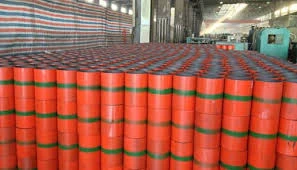- Afrikaans
- Albanian
- Amharic
- Arabic
- Armenian
- Azerbaijani
- Basque
- Belarusian
- Bengali
- Bosnian
- Bulgarian
- Catalan
- Cebuano
- Corsican
- Croatian
- Czech
- Danish
- Dutch
- English
- Esperanto
- Estonian
- Finnish
- French
- Frisian
- Galician
- Georgian
- German
- Greek
- Gujarati
- Haitian Creole
- hausa
- hawaiian
- Hebrew
- Hindi
- Miao
- Hungarian
- Icelandic
- igbo
- Indonesian
- irish
- Italian
- Japanese
- Javanese
- Kannada
- kazakh
- Khmer
- Rwandese
- Korean
- Kurdish
- Kyrgyz
- Lao
- Latin
- Latvian
- Lithuanian
- Luxembourgish
- Macedonian
- Malgashi
- Malay
- Malayalam
- Maltese
- Maori
- Marathi
- Mongolian
- Myanmar
- Nepali
- Norwegian
- Norwegian
- Occitan
- Pashto
- Persian
- Polish
- Portuguese
- Punjabi
- Romanian
- Russian
- Samoan
- Scottish Gaelic
- Serbian
- Sesotho
- Shona
- Sindhi
- Sinhala
- Slovak
- Slovenian
- Somali
- Spanish
- Sundanese
- Swahili
- Swedish
- Tagalog
- Tajik
- Tamil
- Tatar
- Telugu
- Thai
- Turkish
- Turkmen
- Ukrainian
- Urdu
- Uighur
- Uzbek
- Vietnamese
- Welsh
- Bantu
- Yiddish
- Yoruba
- Zulu
Understanding the Functionality and Applications of Petroleum Tubing Couplings
Understanding Petroleum Tubing Couplings A Key Component in Oil and Gas Extraction
In the oil and gas industry, the efficient transportation of hydrocarbons from the reservoir to the surface is crucial for maximizing productivity and ensuring safety. One essential component of this process is the petroleum tubing coupling. This article delves into the function, types, materials, and significance of tubing couplings in petroleum operations.
What is a Petroleum Tubing Coupling?
A petroleum tubing coupling is a mechanical device used to connect two lengths of tubular goods in drilling and production operations. Tubing is the pipe that carries oil and gas from the wellbore to the surface, and couplings serve to join these pipes securely, allowing for flexibility and efficient transport. The integrity of these connections is vital, as any failure can lead to leaks, reduced production efficiency, or catastrophic accidents.
Functions of Tubing Couplings
The primary function of tubing couplings is to create a tight seal between lengths of tubing, ensuring that the fluids can be transported without losses due to leakage. Additionally, these couplings help in accommodating the thermal expansions and contractions that occur in the piping due to changes in temperature, especially in deep wells where temperature gradients can be significant. Couplings also contribute to the overall strength of the tubing string, enabling it to withstand the high pressures prevalent in petroleum reservoirs.
Types of Tubing Couplings
Tubing couplings come in various types, each designed for specific applications and environments. Two common types are
1. Non-Make-Up (NMU) Couplings These do not have a specific torque requirement when connecting. They are used in applications where flexibility is necessary, allowing for easier assembly and disassembly. However, they may not offer the same level of sealing as other coupling types.
2. Make-Up (MU) Couplings These couplings are designed to be tightened to a specific torque, providing a more secure connection and better sealing capabilities. MU couplings are particularly beneficial in high-pressure situations or where a robust seal is required to prevent fluid loss.
petroleum tubing coupling

Materials Used in Tubing Couplings
The materials used in manufacturing tubing couplings must withstand extreme conditions, including high pressures, corrosive environments, and mechanical load. Common materials include
- Steel The most widely used material due to its strength and resistance to deformation. Different grades of steel are selected based on the specific conditions of the well.
- Alloys In environments that are particularly corrosive (such as those containing hydrogen sulfide), specialized alloys like Inconel or Monel may be used to ensure durability and resistance to corrosion.
- Composite Materials In recent years, advancements in material science have introduced composite materials that offer lightweight alternatives with excellent mechanical properties. These are still relatively new in the industry but show promise for future applications.
Importance in Oil and Gas Operations
The importance of petroleum tubing couplings cannot be overstated. They play a critical role in maintaining the integrity of the tubing, protecting the environment from leaks, and ensuring efficient operation of oil and gas wells. Regular inspections and proper maintenance of these couplings are essential to identify wear, corrosion, or fatigue before they lead to failures.
Moreover, the design and manufacturing processes associated with tubing couplings have evolved significantly. Advances in technology, including the use of computer-aided design (CAD) and finite element analysis (FEA), have improved the performance and reliability of these components. Couplings are rigorously tested to ensure they meet stringent industry standards before being deployed in the field.
Conclusion
In conclusion, petroleum tubing couplings are vital components in the oil and gas industry, ensuring the secure and efficient transport of hydrocarbons from underground reservoirs to the surface. Understanding their types, materials, and functions is crucial for professionals working in this field. As technology continues to advance, so too will the design and implementation of tubing couplings, further enhancing their role in safe and productive petroleum extraction processes. Proper selection, installation, and maintenance of these couplings will ensure that oil and gas operations run smoothly, efficiently, and safely.
-
Tubing Pup Joints: Essential Components for Oil and Gas OperationsNewsJul.10,2025
-
Pup Joints: Essential Components for Reliable Drilling OperationsNewsJul.10,2025
-
Pipe Couplings: Connecting Your World EfficientlyNewsJul.10,2025
-
Mastering Oilfield Operations with Quality Tubing and CasingNewsJul.10,2025
-
High-Quality Casing Couplings for Every NeedNewsJul.10,2025
-
Boost Your Drilling Efficiency with Premium Crossover Tools & Seating NipplesNewsJul.10,2025







